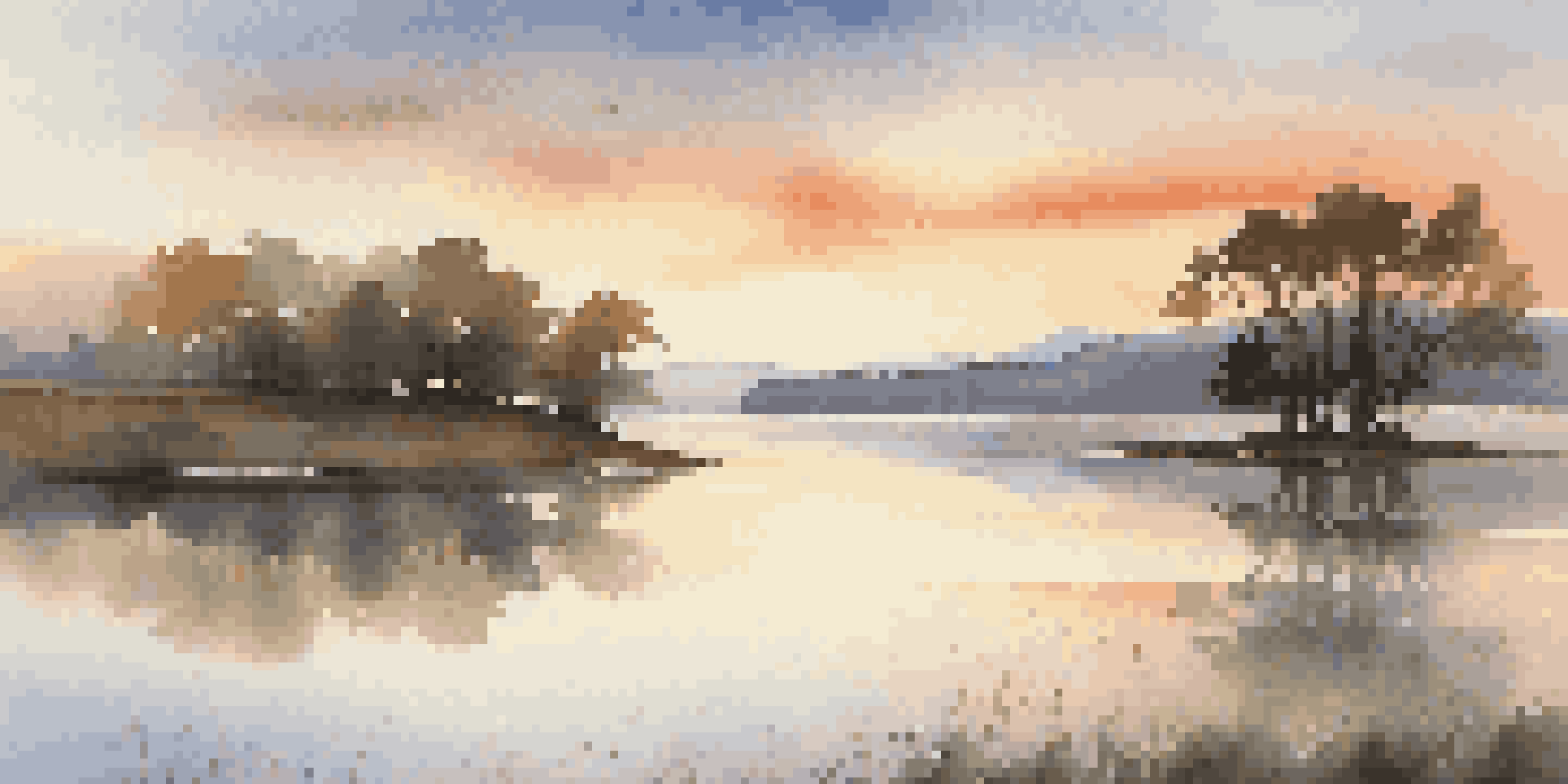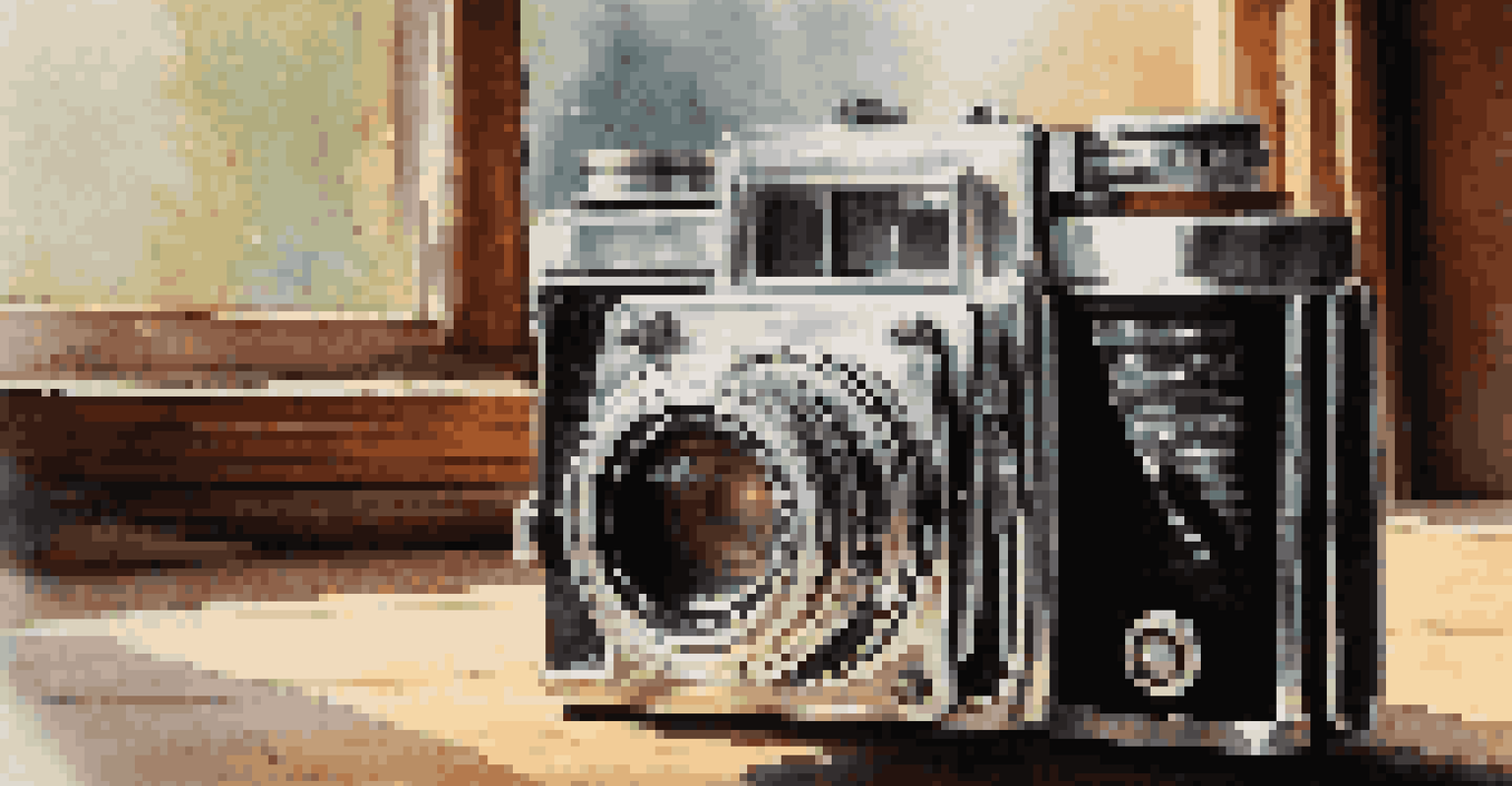The Historical Evolution of Authenticity in Art Movements

Defining Authenticity in Art: A Starting Point
Authenticity in art refers to the genuineness of an artwork, its creator, and the context in which it was made. This idea has evolved over time, shaped by cultural, social, and philosophical changes. In the early days of art, authenticity was often tied to the artist's reputation and skill, but as history progressed, it became more complex and nuanced.
Art is the most beautiful of all lies.
For instance, during the Renaissance, authenticity was largely about the mastery of techniques and the originality of concepts. Artists like Leonardo da Vinci and Michelangelo were celebrated for their unique styles and the ability to convey human emotion authentically. This period laid the groundwork for how we perceive authenticity today, intertwining it with individual expression.
As we move into modern and contemporary art, the definition of authenticity expands further, challenging traditional notions. The question arises: can an artwork be authentic if it’s a reproduction or derived from another source? This complexity invites ongoing discussions about what it means to be ‘real’ in the art world.
The Romantic Era: Individual Expression Takes Center Stage
The Romantic Era in the late 18th and early 19th centuries marked a significant shift in how authenticity was perceived in art. Artists began to prioritize individual emotion and personal experience, moving away from strict adherence to classical forms. This era emphasized the authenticity of feelings over mere technical proficiency, allowing artists to express their inner worlds freely.

For example, painters like Caspar David Friedrich and J.M.W. Turner focused on capturing sublime landscapes and evocative emotions, which were reflections of their personal experiences and philosophies. Their works were seen as authentic because they resonated deeply with the viewer's emotional landscape, creating a strong connection between artist and audience.
Evolving Art Authenticity Concepts
The definition of authenticity in art has transformed over time, reflecting changes in cultural and societal values.
This shift laid the foundation for later movements, such as Impressionism and Expressionism, where the authenticity of personal perception became paramount. The Romantic emphasis on emotion is still felt in today’s art, as many creators continue to seek authenticity through their emotions and experiences.
Impressionism: Capturing Fleeting Moments Authentically
Impressionism emerged in the late 19th century as a revolutionary movement that sought to capture the essence of a moment rather than its precise details. Artists like Claude Monet and Edgar Degas emphasized light and color, presenting scenes from everyday life with an authentic immediacy. This approach challenged the traditional standards of art, which focused on realism and historical subjects.
The artist is the creator of beautiful things. The critic is one who can contemplate with a sense of infinite pleasure the beautiful things created by the artist.
The authenticity in Impressionism lies in its portrayal of reality as a series of fleeting impressions, rather than a fixed representation. By using loose brushwork and vibrant colors, these artists invited viewers to experience the world as they did, emphasizing sensation over accuracy. This method of painting was a radical departure that resonated with the changing perceptions of authenticity.
Impressionism also democratized art, making it more accessible to the public. The movement’s focus on ordinary subjects and everyday moments highlighted the authenticity found in daily life, paving the way for future artists to explore similar themes.
Modernism: Questioning the Nature of Authenticity
As the 20th century dawned, Modernism emerged as a movement that challenged traditional concepts of authenticity in art. Artists began to question what it meant to create something authentic in a rapidly changing world marked by technological advancement and globalization. This period saw a divergence from conventional forms, as artists explored abstraction and new mediums.
Pioneers like Pablo Picasso and Wassily Kandinsky pushed boundaries, suggesting that authenticity need not stem from representational art. Instead, they proposed that the emotional and intellectual responses elicited by an artwork could define its authenticity. This shift invited viewers to engage with art on a deeper level, encouraging personal interpretation and connection.
Romanticism to Postmodernism Shifts
Art movements, from Romanticism prioritizing personal emotion to Postmodernism questioning originality, illustrate varying interpretations of authenticity.
Modernism opened the door for diverse interpretations of authenticity, leading to a myriad of artistic expressions. The dialogue surrounding what constitutes 'authentic' art became increasingly complex, reflecting the multifaceted nature of human experience in a modern context.
Postmodernism: Embracing Irony and Pluralism
Postmodernism, which gained traction in the late 20th century, further complicated the idea of authenticity in art. This movement embraced irony, pastiche, and pluralism, challenging the notion of a single, authentic truth. Artists like Andy Warhol and Cindy Sherman employed techniques that blurred the lines between original and reproduced works, questioning the very foundations of authenticity.
In this context, authenticity became less about the artist's individual expression and more about the cultural narratives surrounding art. Warhol's use of mass production techniques in his silkscreen prints raised questions about the value of originality in a consumer-driven society. Similarly, Sherman’s photography explored identity and representation, inviting viewers to consider the constructed nature of authenticity.
Postmodernism encourages a broader understanding of authenticity, suggesting that it can exist in various forms and contexts. This idea resonates in today’s art world, where multiple perspectives and narratives coexist, allowing for a richer and more inclusive definition of authenticity.
The Digital Age: New Dimensions of Authenticity
In the digital age, the concept of authenticity in art has taken on new dimensions. With the rise of digital media and technology, artists are exploring innovative ways to express their ideas, leading to questions about the authenticity of digital art. Can a digital artwork be considered as authentic as a traditional painting, or does the medium change its value?
Digital artists like Beeple and Rafael Rozendaal have embraced the possibilities of technology, creating works that challenge traditional notions of authenticity. The advent of NFTs (non-fungible tokens) has further complicated this discussion, as digital art can now be bought and sold in unique, verifiable ways. This development has led to a renewed interest in ownership and provenance in the digital realm.
Digital Age Challenges Authenticity
The rise of digital art and technologies, including NFTs, has introduced new complexities in understanding and valuing authenticity in contemporary art.
As we navigate this evolving landscape, the definition of authenticity continues to expand. The digital age invites artists and audiences alike to reconsider what it means to create and appreciate art, emphasizing that authenticity can manifest in diverse and innovative forms.
Conclusion: The Ongoing Evolution of Authenticity in Art
The historical evolution of authenticity in art reflects broader societal changes and the shifting values of different eras. From the emphasis on individual expression during the Romantic Era to the questioning of authenticity in the digital age, this journey showcases the dynamic nature of art itself. Each movement has contributed to a richer understanding of what authenticity means, challenging us to think critically about the art we encounter.
As we continue to explore new mediums and forms of artistic expression, the conversation around authenticity remains lively and relevant. Artists today draw upon a vast tapestry of influences, making it essential for us to remain open-minded about the nature of authenticity in their work. This ongoing evolution invites both creators and viewers to engage in a dialogue about what it means for art to be 'real' or 'true'.

Ultimately, the journey of authenticity in art is far from over. As we embrace new technologies and perspectives, we can look forward to an exciting future where authenticity is continuously redefined, enriching the art world and our experiences within it.